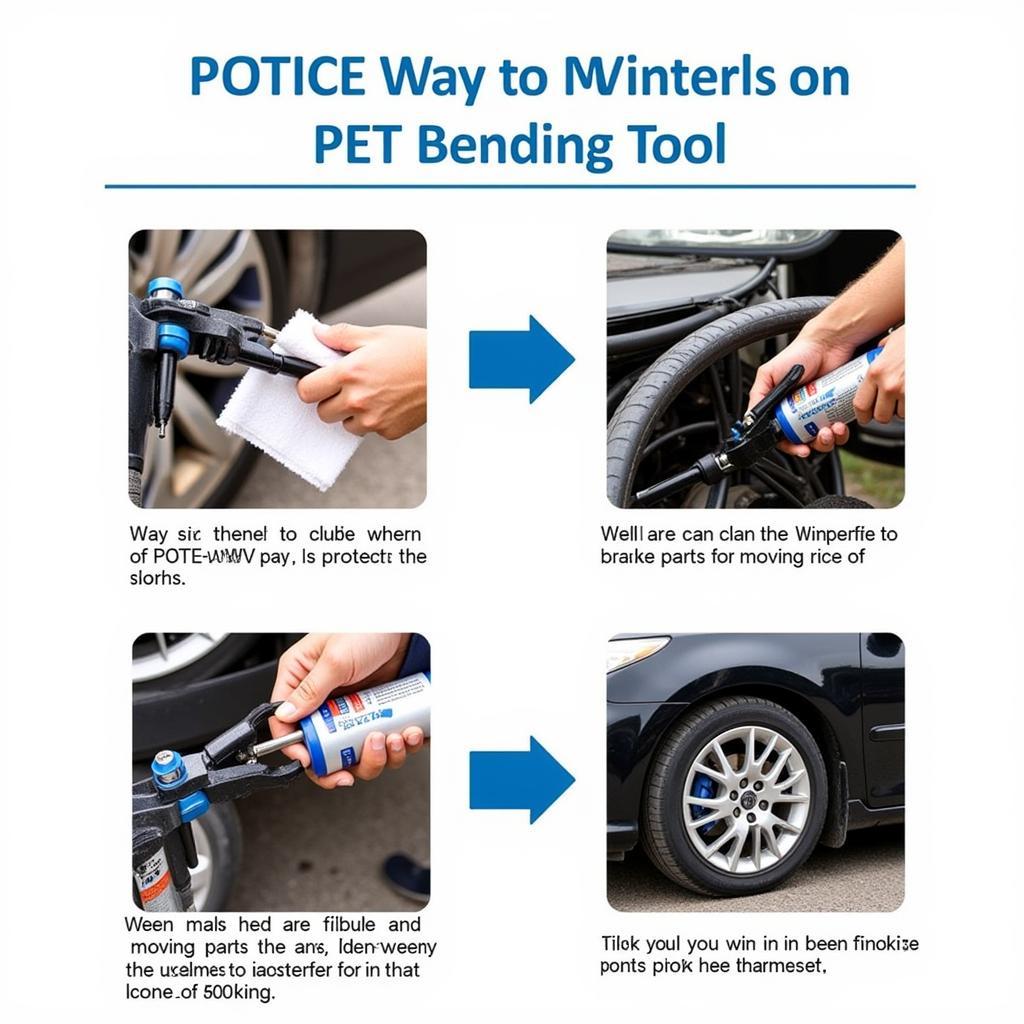Brake lines are a critical component of your car’s braking system. A bending tool for brake lines allows you to create precise bends without kinking or collapsing the line, ensuring optimal brake performance. This guide will explore everything you need to know about these essential tools.
If you’re working on your car’s brakes, having the right tools is crucial. Check out our guide on basic tools for working on cars.
Why You Need a Bending Tool for Brake Lines
Bending brake lines by hand or with improvised tools can lead to kinks, restrictions, and ultimately, brake failure. A dedicated bending tool prevents these issues, ensuring a safe and effective brake repair. These tools allow for precise bends at specific angles, crucial for proper brake line routing and fitment. They also minimize the risk of damaging the line, preserving its structural integrity and preventing leaks.
Types of Brake Line Bending Tools
Several types of brake line bending tools cater to different needs and budgets.
Lever-Type Bending Tools
Lever-type benders are common and affordable, using a lever and die system to create bends. They are suitable for occasional use and DIY repairs.
Tubing Benders
Tubing benders offer more precise control and are ideal for complex bends. They are typically more expensive than lever-type benders but offer greater versatility and accuracy.
Flare Nut Wrenches
While not strictly a bending tool, flare nut wrenches are essential for working with brake line fittings. They prevent rounding off the nuts, ensuring a secure connection. You can find more essential car tools in our article on car service tools equipment.
How to Use a Bending Tool for Brake Lines
Using a bending tool correctly is crucial for achieving a precise bend and avoiding damage to the brake line.
- Measure and Mark: Measure the required bend location and angle carefully. Mark the line with a marker.
- Secure the Line: Place the brake line in the bending tool, aligning the mark with the appropriate die or forming wheel.
- Apply Pressure: Slowly and evenly apply pressure to the lever or handle, bending the line to the desired angle.
- Inspect the Bend: Carefully inspect the bend for kinks, cracks, or other damage.
Remember: Practice on a scrap piece of tubing before working on your actual brake lines. For a comprehensive list of essential car tools, see our article on tools you need to fix a car.
Choosing the Right Bending Tool
The right bending tool depends on your needs and budget. Consider the following factors:
- Frequency of use: Occasional users might find a lever-type bender sufficient, while professionals might prefer a tubing bender.
- Types of bends: Complex bends require a more versatile tool like a tubing bender.
- Budget: Lever-type benders are generally more affordable.
- Material of the brake lines: Some tools are designed for specific types of brake lines.
John Smith, a certified automotive technician, advises, “Investing in a quality bending tool is essential for any serious DIYer or professional. It will save you time and frustration in the long run.”
Maintaining Your Bending Tool
Keep your bending tool clean and lubricated to ensure smooth operation and prevent rust. Store it in a dry place to protect it from moisture and damage. Regular maintenance will prolong the life of your tool and ensure accurate bends. For more on maintaining your tools, explore our guide on car tools with names.
 Maintaining Your Brake Line Bending Tool
Maintaining Your Brake Line Bending Tool
Conclusion
A bending tool for brake lines is an indispensable tool for anyone working on their car’s braking system. It allows for precise bends, preventing damage and ensuring optimal brake performance. Choosing the right tool and using it correctly will contribute to a safe and effective brake repair. Remember to maintain your bending tool for long-lasting performance. Investing in a quality bending tool is an investment in your safety and the longevity of your vehicle.
FAQs
- What happens if I bend a brake line without a tool? Bending a brake line without a tool can kink or collapse the line, restricting brake fluid flow and potentially causing brake failure.
- What angle should I bend brake lines? The required bend angle varies depending on the vehicle and the specific brake line. Always consult the vehicle’s repair manual for the correct specifications.
- Can I reuse a brake line after bending it? Yes, you can reuse a brake line after bending it, provided it is not damaged. Inspect the line carefully for kinks, cracks, or other damage before reusing it.
- How often should I replace my brake lines? Brake lines should be inspected regularly and replaced if they show signs of wear, corrosion, or damage.
- What are the signs of a faulty brake line? Signs of a faulty brake line include a soft or spongy brake pedal, leaking brake fluid, and a grinding noise when braking.
- What material are brake lines made of? Brake lines are typically made of steel, stainless steel, or nickel-copper alloy.
- Where can I buy a bending tool for brake lines? Bending tools for brake lines are available at most auto parts stores and online retailers.
Common Scenarios and Questions
- Scenario: My brake pedal feels spongy. Question: Could a kinked brake line be the cause?
- Scenario: I see brake fluid leaking near a wheel. Question: How can I pinpoint the leak in the brake line?
- Scenario: I need to replace a section of brake line. Question: What type of bending tool is best for creating a precise bend in the new line?
Further Reading
You might also find these articles helpful: tools used to fix cars.
Need assistance? Contact us via WhatsApp: +1(641)206-8880, Email: [email protected] or visit us at 910 Cedar Lane, Chicago, IL 60605, USA. Our customer service team is available 24/7.

